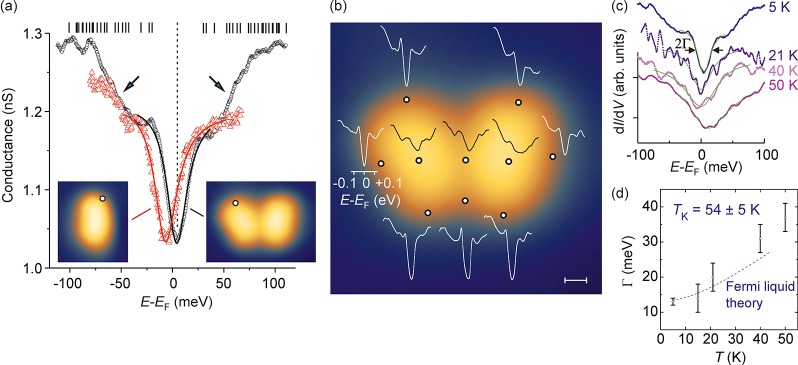Figure 2.

STS results of BDPA on Au(111). (a) dI/dV spectrum of BDPA monomer (red) and a dimer (black) recorded at 5 K over positions marked by circles in the STM topographic insets; the feedback loop has been opened at +1 V, 50 pA, and a z-offset of 70 pm; the zero-bias conductance of pristine Au(111) was calibrated to 1.3 nS; solid lines are numerical Fano fits of the Kondo antiresonance (fit parameters see Table 1); arrows mark broad shoulders attributed to inelastic excitations (details see text); and vertical bars indicate energies of possible collective vibrational modes obtained from DFT calculations relative to the Kondo dip of the dimer marked by the dashed line. (b) dI/dV Kondo spectra over different positions (○) of a BDPA dimer; scale bar = 0.2 nm. (c) dI/dV Kondo spectra of the BDPA dimer at different temperatures; the feedback loop has been opened at +1 V, 50 pA, and a z-offset of 70 pm. (d) Temperature-dependent broadening of the Kondo signal for the BDPA dimer recorded over similar STM tip position close to the rim of BDPA; the dashed line represents best-fit based on the formalism proposed by Nagaoka et al.22
